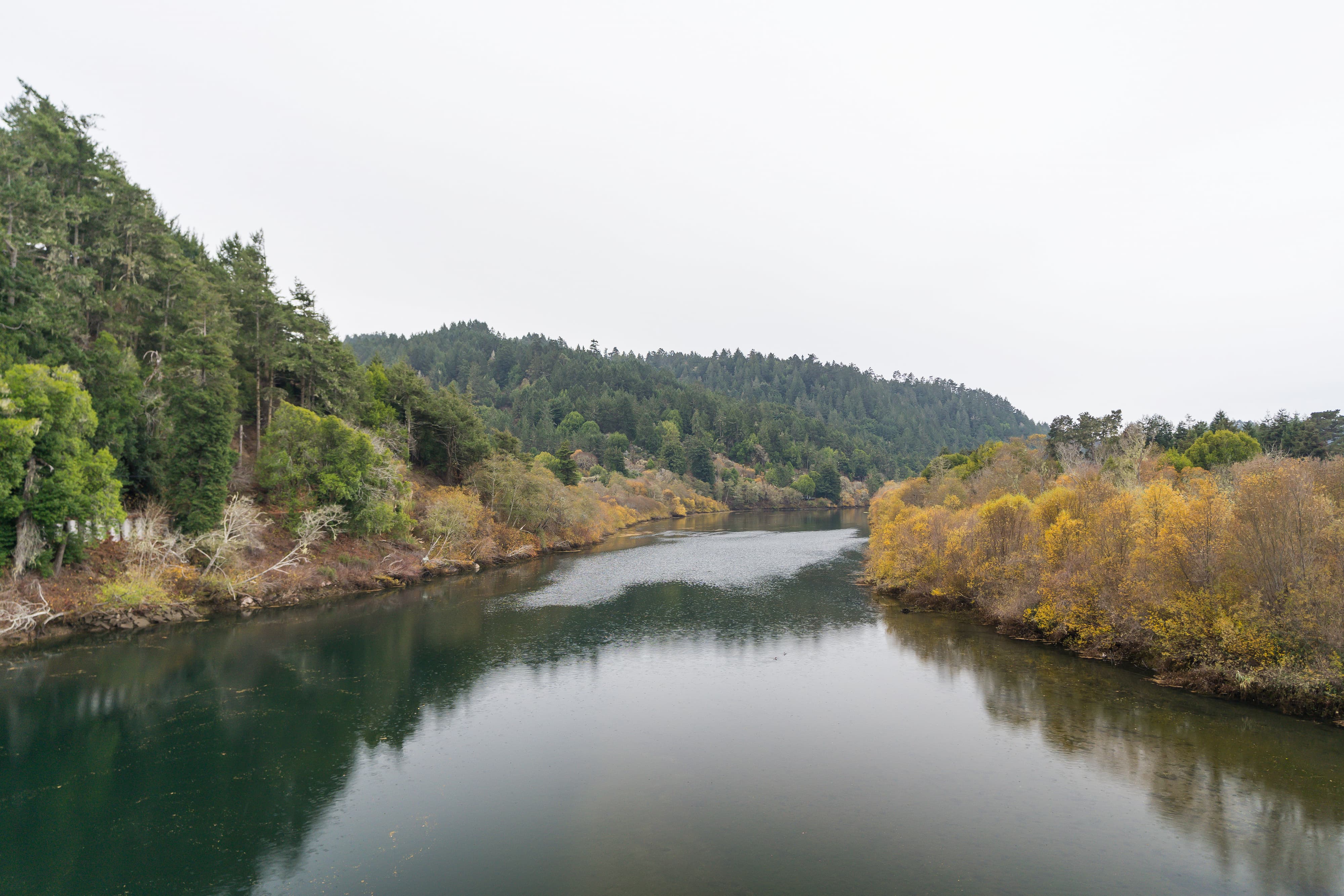
Overview
This Plan is intended to guide capacity investments and the implementation of projects, actions, and initiatives focused on community and watershed resilience in the North Coast region of California. It was developed with funding from the California Department of Conservation’s Regional Forest and Fire Capacity Program. In addition to background regarding the North Coast region and the North Coast Resource Partnership, the Plan contains four core elements. The Prioritization section outlines the process by which NCRP applies a diversity of data and information to evaluate and refine the highest-priority projects and activities at the regional and local scales. The Strategies section contains the actions that NCRP and its regional partners have identified to achieve outcomes on the ground and in communities. The Demonstration Projects section describes projects that pilot measurable innovations to help the region expand the pace, scope, and scale of watershed, community, and forest resilience via a “test bed” approach. The Plan Implementation section describes how NCRP works with regional partners to implement the shared vision described in this Plan.
Expected outcomes of this Plan include:
- A shared, adaptive vision of desired future conditions in the region.
- Increased capacity for NCRP partners to identify, prioritize, and plan for watershed, forest, and community resilience.
- Increased coordination of wildfire planning and watershed stewardship efforts across jurisdictional and ownership boundaries.
- Implementation and monitoring of a set of priority watershed and community resilience strategies, actions, and projects that contribute to the economic, social, and ecological sustainability of the North Coast region.
- A living library of resources for current and future projects.
- Short-term and long-term funding attracted to the strategies, actions, and projects in the Plan.
- Increased state, federal, and philanthropic funder understanding of the need for investment in the North Coast region.

About the RFFC Program
The Regional Forest and Fire Capacity Program was developed to support regional leadership to build local and regional capacity and develop, prioritize, and implement strategies and projects that create fire-adapted communities and landscapes by improving ecosystem health, community wildfire preparedness, and resilience to wildfires and other extreme events.
The Department of Conservation accomplishes these goals by providing block grants to regional and statewide entities to support the implementation of the program, and all elements of the program are consistent with California’s Wildfire and Forest Resilience Action Plan as well as the California Forest Carbon Plan and Executive Order B-52-18. Broad and inclusive outreach and involvement in decision-making is a priority of the program.
Regional block grantees are expected to partner extensively across their region to identify priorities and develop projects in collaboration with Tribal, federal, state, and local governments as well as water agencies, Resource Conservation Districts, Fire Safe Councils, and other NGOs. The RFFC Program is funded by the California Natural Resources Agency and administered by the California Department of Conservation.
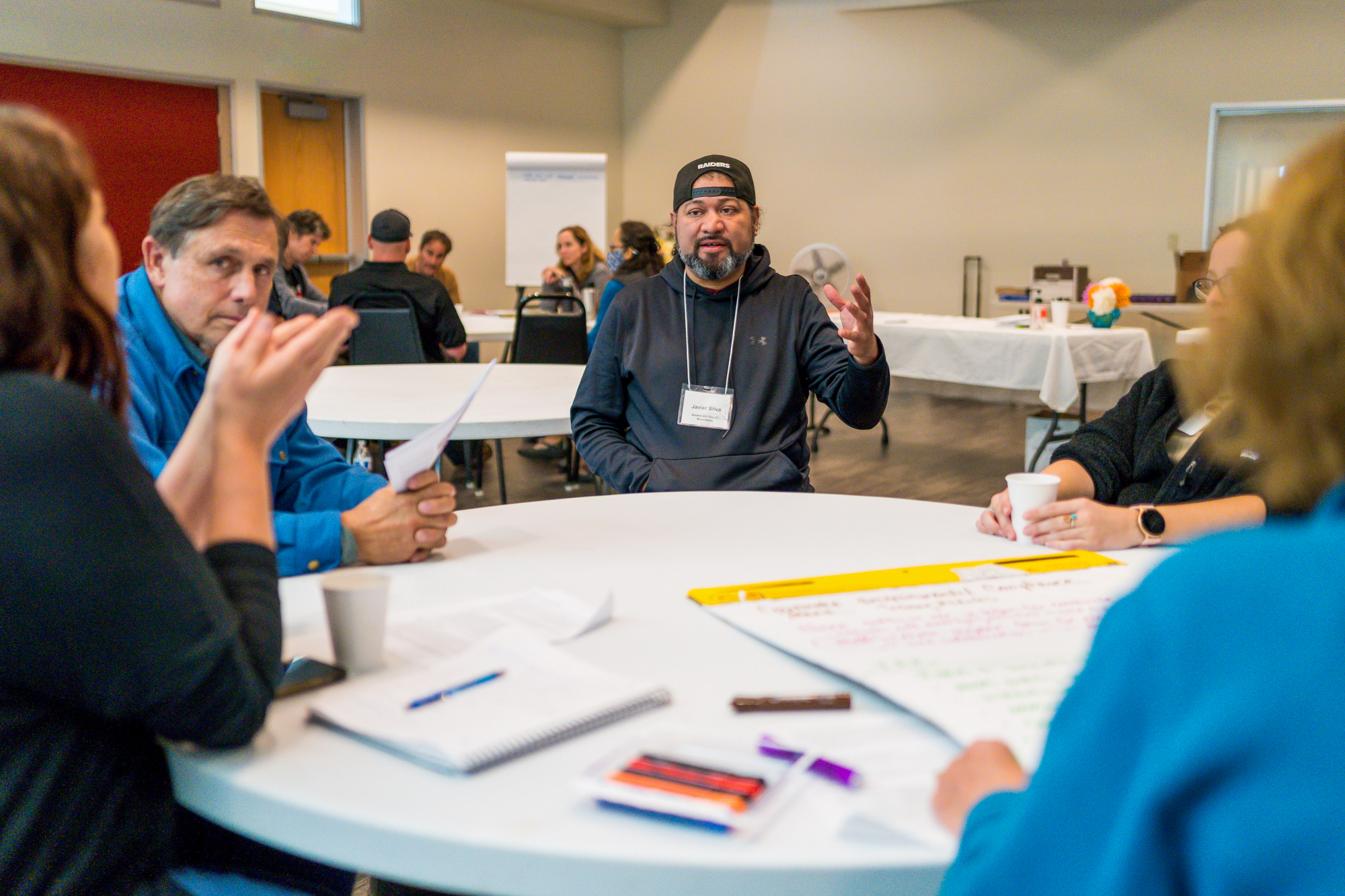
How the Plan Was Developed
The Plan was developed with funding from the Regional Forest and Fire Capacity Program. It was developed by North Coast Resource Partnership staff and consultants under the direction and guidance of the NCRP Leadership Council, and in close collaboration with an array of partners, including the North Coast region’s Tribes, Tribal organizations, counties, local and regional agencies, NGOs, RCDs, watershed groups, private landowners, and other organizations. The Plan has been refined and improved via multiple rounds of review by the NCRP RFFC Ad Hoc Committee, Tribal partners and consultants under the guidance of the NCRP Tribal Engagement Director, NCRP’s Technical Forest Advisors, and the NCRP Technical Peer Review Committee, as well as regional partners who have together contributed thousands of hours to developing this shared regional vision. In all, more than 500 people have provided input, comments, and review of the Plan, via workshops, meetings, the NCRP website and a formal, broadly advertised public review process. Because this Plan is adaptive in nature, NCRP will respond to new input and update it regularly.
Plan development followed the process outlined in the NCRP Adaptive Planning and Prioritization Framework and is described below.
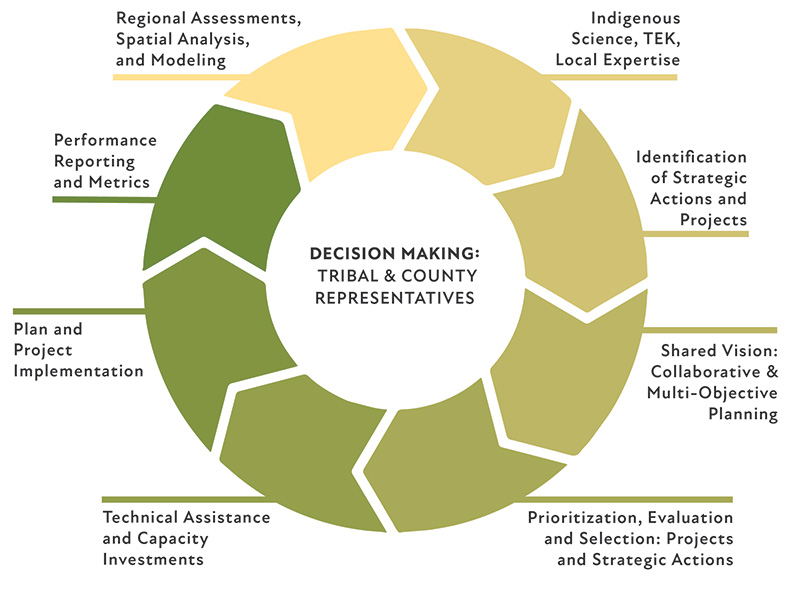
Regional Assessment, Spatial Analysis, and Modeling:
- Regional Assessments were conducted to determine which communities are most at risk from wildfire, the locations of important community resources and assets, potential strategic fuel break locations, and where mechanical treatment of hazardous fuels is likely to be most feasible. These assessments build upon, and are integrated with, an array of data and analyses related to watershed and community health and climate change conducted by NCRP since 2005.
Indigenous Science, TEK, and Local Knowledge:
- Throughout the multi-year planning process, the NCRP Leadership Council (elected or appointed representatives of North Coast Tribes and counties) provided information and recommendations to reflect the priorities of their communities and inform the Plan at all stages, and have reviewed multiple iterations of the draft Plan through the lens of their local communities.
- The NCRP Technical Peer Review Committee (appointed representatives of North Coast Tribes and counties) participated in Plan review via interviews, meetings with the NCRP staff team, and participation on the RFFC Ad Hoc committee.
- The Leadership Council convened a RFFC Ad Hoc committee specific to this Plan, composed of Leadership Council and Technical Peer Review Committee members. The RFFC Ad Hoc met eleven times during the planning period to provide content, review, and guidance to the NCRP staff team, and individual members were interviewed regarding priorities for wildfire, watershed, forest, and community resilience.
- Led by NCRP’s Director of Tribal Engagement, Tribal consultants provided content and reviewed multiple drafts of the Plan. Additional Tribal review from North Coast Tribes or Tribal representatives has included interviews with North Coast Tribes impacted by fire, utilizing traditional fire, and addressing post-fire concerns. A series of meetings in 2021 and 2022 focused on topics including:
- Orientation, Capacity, Year-round Solutions
- Fire Resilient Forests, Ecosystem Conservation and Restoration, Reintroduction of Tribal Strategies
- Biomass, Climate Action, Intentional Prescriptions of Pace and Scale (Alignment with Tribes)
- Community Health & Safety, Community Infrastructure
- Identifying Capacity-Building Needs: trainings, infrastructure, equipment & navigating agency programs for Tribal co-management, protection of cultural and subsistence resources
- Local and regional subject matter experts from a variety of entities across an array of disciplines provided content and reviewed multiple drafts of the Plan. These included registered professional foresters, as well as experts in Indigenous Science and TEK, spatial analysis, remote sensing, community safety, fire response, habitat restoration, policy, markets and regulatory processes, and others. The list of entities that provided content development for the Plan is included in the Acknowledgments section.
- Data from the Regional Assessments has been and will continue to be refined via community meetings and workshops, including the assessment of Tribal and rural fire department capacity needs, community workshops regarding potential fuel break locations, and workshops to gather feedback from the community on the overall NCRP Adaptive Planning and Prioritization Framework.
Identification & Ongoing Tracking of Strategic Actions and Projects:
- The information, priorities, and recommendations identified during the above-described process of regional assessments and local refinements were categorized into a set of Strategies, which describe the desired Outcomes for the North Coast region, supported by a list of Solutions, Actions, and Projects to be carried out during Plan implementation. A formal RFP resulted in a set of 13 partner-led Demonstration Projects designed to test concepts, methods, and innovative techniques that can be scaled up and applied across the region. Results from these Demonstration Projects have been quantitatively documented by project sponsors and have informed key Plan sections.
- The NCRP Project Tracker was created to document the North Coast region projects and strategic actions at a variety of stages, including conceptual, implementation-ready, in need of technical assistance or funding, funded, implemented, maintenance and monitoring.
Shared Vision: Collaborative and Multi-Objective Planning
- Results from the previous steps culminated in the development of the current Plan, which is intended to guide investments and priorities for building capacity and resilience in the North Coast region and achieving five interrelated Outcomes: Capacity, Fire Resilient Forests, Community Health and Safety, Ecosystem Conservation and Restoration, and Climate Action. These Outcomes and the actions to achieve them are described in the Strategies section.
- The Prioritization section describes how the NCRP and regional partners collaborate to plan and prioritize action.
- The Demonstration Projects section describes the results of the RFFC-funded demonstration projects.
- The Plan Implementation section describes how NCRP and regional partners will work together to implement the Plan.
- The Plan is presented in this digital format so that it is accessible and flexible. It has been and will continue to be regularly updated with new data and new learning, and will be updated and adapted as the shared regional vision matures.
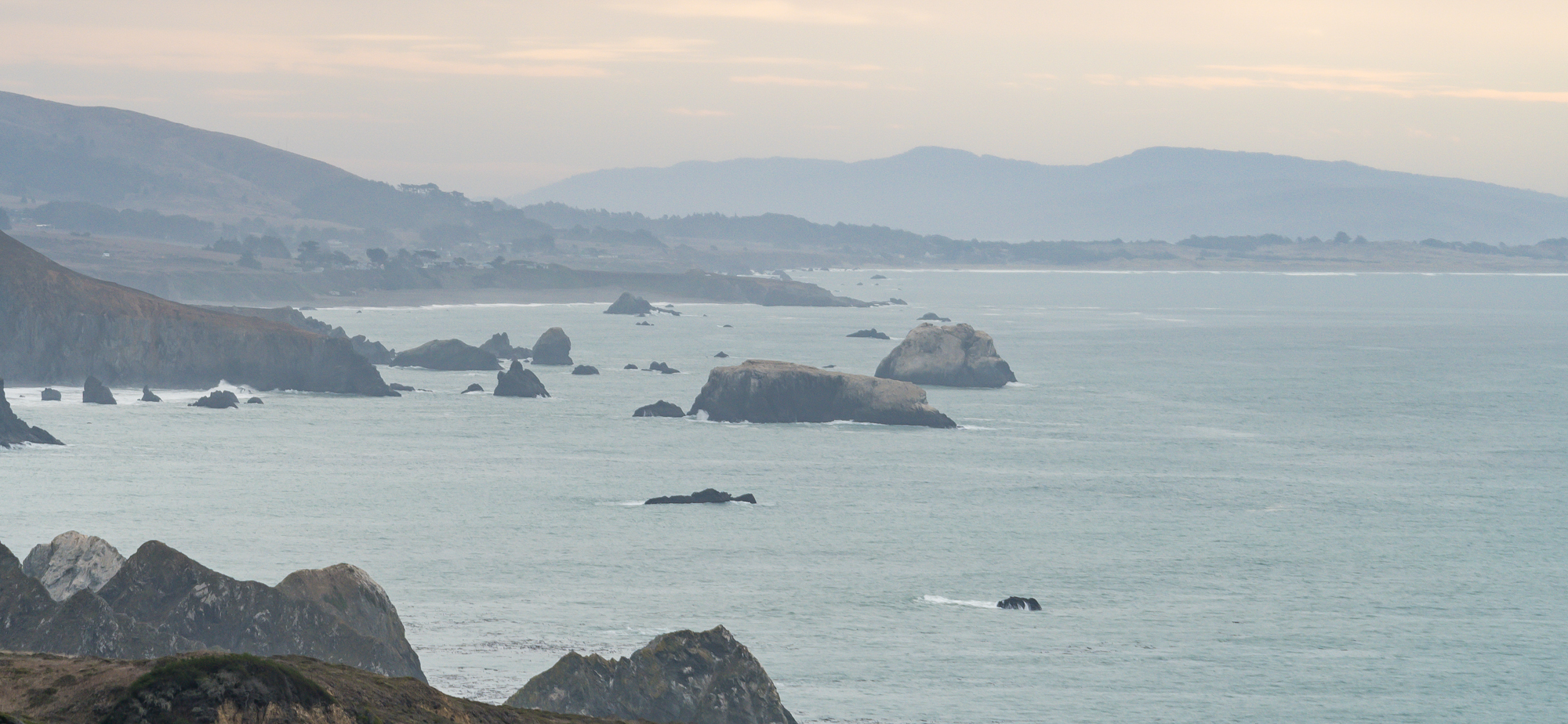
About the North Coast Region
The North Coast region comprises 19,000 square miles, or 12% of California’s landscape. The region aligns with the hydrologic boundary of Region 1 of the State Water Resources Control Board, and includes the Tribal lands of 34 federally recognized Tribes and all or part of seven counties. The North Coast region is a rural source region for water and biological diversity, and sequesters substantial amounts of the carbon found in California’s forests. The region is severely economically challenged, with over 50% of the population living under the poverty line. The North Coast Region Story Map provides additional detail about the North Coast region.

About the North Coast Resource Partnership
The North Coast Resource Partnership, convened in 2005, actively collaborates with hundreds of Tribal, federal, state, regional, and local partners, and is led by appointees from the region’s Tribes and counties. Its mission is to enhance the watersheds and communities of the North Coast region through collaborative, multi-objective planning and project implementation led by Tribes and counties. Since its inception, NCRP has successfully integrated Tribal, federal, state, regional, and local priorities to create a shared vision for the region, and utilized a multi‐benefit, transparent and equitable approach to identify and seek funding for the highest-priority projects throughout this diverse region.
NCRP’s focus is to:
- Provide regional collaborative infrastructure to ensure cross-boundary collaboration at a variety of spatial scales.
- Engage in data development, data gathering, assessments, and convenings that integrate regional and local expertise and knowledge, including Indigenous knowledge and practice, including TEK, resulting in multi-objective, actionable, prioritized regional plans and a shared vision for the region.
- In collaboration with partners, identify, refine, evaluate, and maintain a “pipeline” of priority projects and activities that achieve the mission of NCRP and its partner funding entities, and implement regional and local plans and priorities.
- Share information with funders and decision makers regarding essential investments, needs, and priorities in the North Coast region.
- Support partners in the region with technical assistance and capacity investments to enhance the pace, scope, and scale of project development and implementation.
- Advocate for, manage, and allocate grant funding that reflects the priorities and needs of North Coast communities and is in alignment with Tribal, federal, state, and philanthropic partner objectives.
- Report on progress for an array of performance metrics, for individual projects and at the scale of the entire region.
- Adaptively update and implement this regional resilience Plan for North Coast communities and watersheds
For more information on the North Coast Resource Partnership, see the North Coast Resource Partnership Story Map.
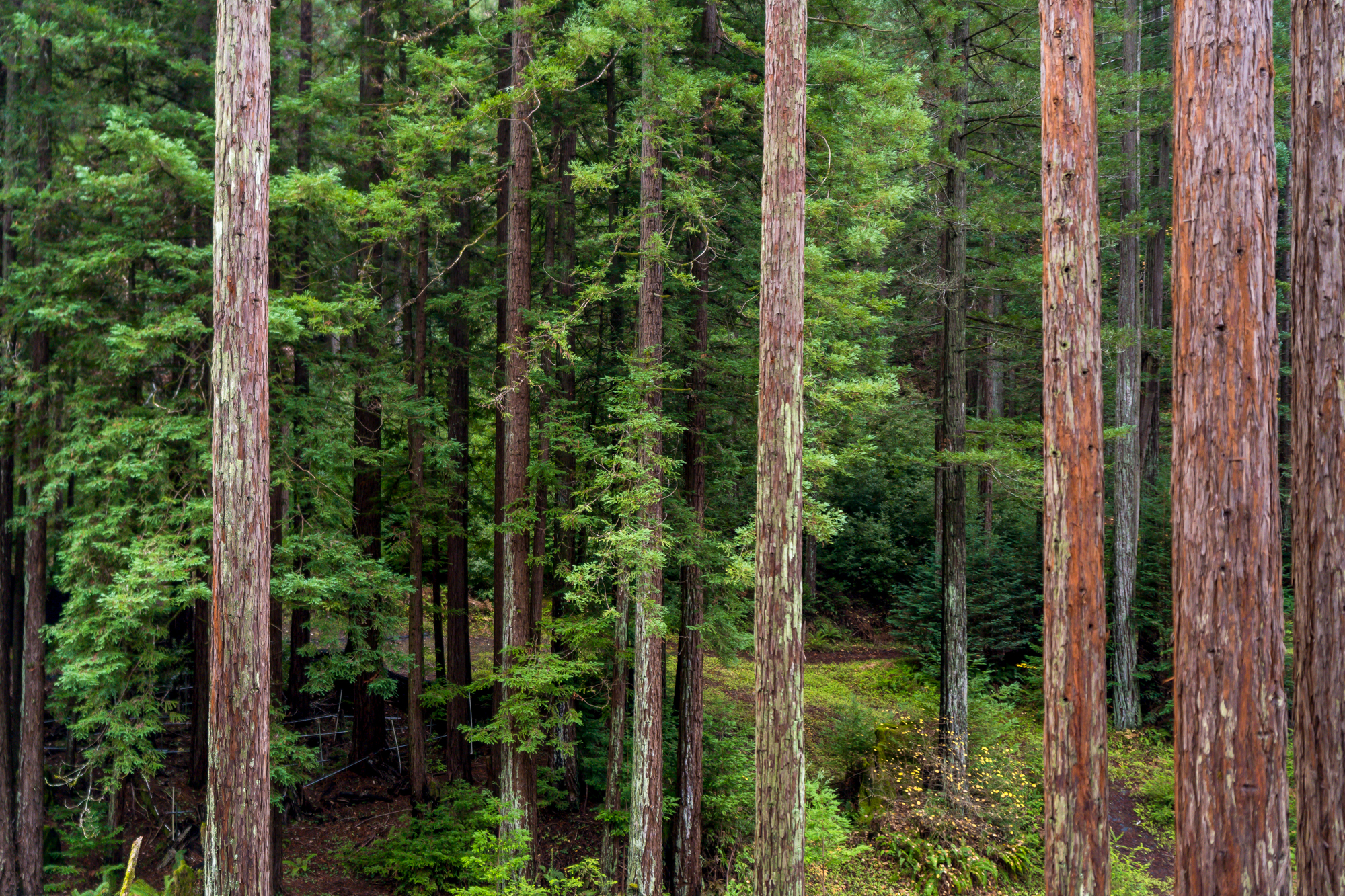
Acknowledgements
Development of this Plan was funded with California Climate Investments funding granted by the California Natural Resources Agency, Department of Conservation to the North Coast Resource Partnership as part of the Regional Forest and Fire Capacity Program. Information, recommendations, and expertise were provided by a broad array of the region’s Tribes, NGOS, RCDs, agencies and private sector partners via meetings, workshops and public review. These groups and individuals are too numerous to list individually here – NCRP appreciates and values their contributions to this shared vision for regional resilience.
The following individuals and organizations contributed substantially to the development of this plan, via funding, guidance, overall plan direction, content development, or in-depth review of multiple plan drafts.
Agency Partners
California Department of Conservation
California Department of Water Resources
CAL FIRE
California Natural Resources Agency
California State Coastal Conservancy
California State Water Resources Control Board
California Wildfire and Forest Resilience Task Force
Governor’s Office of Planning and Research
Regional Water Quality Control Board
Strategic Growth Council
UC Agriculture and Natural Resources/UC Cooperative Extension
US Forest Service
NCRP Leadership Council
Co-Chair: Leaf Hillman, Karuk Tribe, Tribal Northern District
Co-Chair: Supervisor James Gore, Sonoma County
Co-Vice-Chair: Nathan Rich, Water Quality Specialist, Kashia Band of Pomo,Tribal Southern District
Co-Vice-Chair: Supervisor Steve Madrone, Humboldt County
Executive Committee: Michelle Downey, Environmental Protection Agency Manager, Round Valley Indian Tribe, Tribal Central District
Executive Committee: Supervisor Nancy Ogren, Siskiyou County
Supervisor Rex Bohn, Humboldt County
Supervisor Jeremy Brown, Trinity County
Supervisor Geri Byrne, Modoc County
Supervisor Brandon Criss, Siskiyou County
Supervisor Dan Gjerde, Mendocino County
Supervisor Susan Gorin, Sonoma County
Supervisor Keith Groves, Trinity County
Supervisor Gerry Hemmingsen, Del Norte County
Supervisor Chris Howard, Del Norte County
Supervisor Glenn McGourty, Mendocino County
Alternate: Barry McCovey, Department Director of the Yurok Fisheries Department, Yurok Tribe, Tribal Northern District
Alternate: Salvina Norris, Policy and Procedures Chair, Dry Creek Rancheria,Tribal Southern District
Alternate: Grant Davis, Sonoma Water
Alternate: Supervisor Maureen Mulheren, Mendocino County
Alternate: Dale Roberts, TPRC Co-chair, Sonoma Water
Alternate: Supervisor Mike Wilson, Humboldt County
NCRP Technical Peer Review Committee
Co-Chair: Sandra Perez, Program Manager, Five Counties Salmonid Conservation Program, Trinity County
Co-Chair: Dale Roberts, Engineer, Sonoma County Water Agency
Rosanna Bower, Assistant County Engineer, Del Norte County
Sean Curtis, Modoc County Natural Resources
Rick Dean, Siskiyou County Director of Community Development
Wayne Haydon, Certified Engineering Geologist, Sonoma County
Pat Kaspari, General Manager, McKinleyville Community Services District, Humboldt County
Mark Lancaster, Director, Five Counties Salmonid Conservation Program, Trinity County
Jonathan Olson, Crescent City Public Works Director, Del Norte County
Chris Ott, Dry Creek Rancheria, Tribal Southern District
Patricia Rabano, Tribal Historic Preservation Office Manager, Round Valley Indian Tribe, Tribal Central District
Joe Scriven, Interim Executive Director/Fisheries Biologist, Mendocino Resource Conservation District
Hank Seemann, Deputy Director, Environmental Services, Public Works Department, Humboldt County
Toz Soto, Senior Fisheries Biologist, Karuk Tribe, Tribal Northern District
Alternate: Jose Baquero, Civil Engineer, Dry Creek Rancheria, Tribal Southern District
NCRP Regional Forest and Fire Capacity Program Ad Hoc Committee
Responsible for direction, guidance, and review throughout the Plan development process
Chair: Leaf Hillman, Karuk Tribe, Northern Region
Vice-Chair: Supervisor Steve Madrone, Humboldt County
Supervisor Rex Bohn, Humboldt County
Supervisor Brandon Criss, Siskiyou County
Michelle Downey, Environmental Protection Agency Manager, Round Valley Indian Tribe, Tribal Central District
Wayne Haydon, Certified Engineering Geologist, Sonoma County
Supervisor Gerry Hemmingsen, Del Norte County
Mark Lancaster, Director, Five Counties Salmonid Conservation Program, Trinity County
Supervisor Nancy Ogren, Siskiyou County
Dale Roberts, Engineer, Sonoma County Water Agency, Sonoma County
Toz Soto, Senior Fisheries Biologist, Karuk Tribe, Tribal Northern District
Tribal Content Development and Review Consultation
NCRP would like to thank the following Tribes for active participation in Tribal content development and review meetings
Bear River Band of Rohnerville Rancheria
Blue Lake Rancheria
Cahto Tribe of Laytonville Rancheria
Coyote Valley Tribe
Dry Creek Rancheria of Pomo Indians of California
Elk Valley Rancheria
Hopland Band of Pomo Indians
Karuk Tribe
Kashia Band of Pomo Indians of the Stewart’s Point Rancheria
Lytton Band of Pomo Indians
Potter Valley Tribe
Quartz Valley Indian Tribe
Round Valley Indian Tribe
Tolowa Dee-ni’ Nation
Wiyot Tribe
Yokayo Tribe
Yurok Tribe
NCRP Core Team
Responsible for overall Plan development, review, coordination of technical consultants, coordination with NCRP Leadership Council, NCRP RFFC Ad Hoc Committee, NCRP Technical Peer Review Committee, and funding agencies
Julia Cavalli, Senior Environmental Analyst, Humboldt County Public Works
Karen Gaffney, NCRP Director of Strategic Planning and Communications
Katherine Gledhill, NCRP Director of Project Development
Allison Hacker, NCRP Core Consultant
Susan Haydon, NCRP Director of Legislation and Policy Development
Cybelle Immitt, NCRP Director of Administration and Contracting
Kathy McCovey, NCRP Tribal Consultant
Denise Monday, Senior Environmental Analyst, Humboldt County Public Works
Steven Nevarez, NCRP Tribal Technical Assistance Specialist, California Indian Environmental Alliance
Sherri Norris, NCRP Director of Tribal Engagement, California Indian Environmental Alliance
Rose Roberts, NCRP Core Consultant
Javier Silva, NCRP Tribal Technical Assistance Coordinator, California Indian Environmental Alliance
Technical Experts & Consultants
Responsible for content development, review, and revision
Audubon Canyon Ranch/Fire Forward: Sasha Berleman
BBW: Mark Andre, Jared Gerstein, Mark Lancaster
Caldwell Consulting: Marie Caldwell
California Indian Environmental Alliance: Marissa Fierro, Joel Fontaine, Helen Ryan
CLERE Inc: Christiana Darlington
Conservation Innovations Group: Gary Knoblock
Environmental Science Associates/Sitka Technologies (Project Tracker)
ForEverGreen Forestry: Tracy Katelman
Indigenous Stewardship Network: Don Hankins
Karuk Tribe: Bill Tripp
Oregon State University: Chris Dunn
Mendocino County Fire Safe Council: Scott Cratty
Mid Klamath Watershed Council: Will Harling
Planwest Partners: John Miller, Colette Santsche
Reza Environmental: Kate Reza
TPoint 550: Kirk Girard
Tukman Geospatial: Ella Griffith, Mark Tukman
UC ANR/Cooperative Extension: Stephanie Larson, Lenya Quinn-Davidson
VR Conservation Collective: Vance Russell
Water Solutions Network: Debbie Franco
Watershed Research and Training Center: Tim Bailey, Tiernan Doyle, Nick Goulette, Allison Jolley, Martin Twer
Digital Plan Design
Eclipse Media Solutions: Matt Hensley
Idea Cooperative: Tyler Young
Topo Collective: Alex Roa
